Books: building a better world with protest architecture
With Christmas around the corner, recessed.space is looking
at a few fascinating books that will make a perfect gift for the architecture
& art lover in your friend or family group. Even if you don’t do Christmas,
these books will still make great presents. First up we look at Protest
Architecture: Structures of Civil Resistance by Nick Newman & from RIBA
Publishing, a publication with a parallel exhibition at London’s Victoria &
Albert Museum.
Not all architectural publications are coffee table books of
shiny people-less photos of the latest sculptural imaginings of starchitects. For,
example, here is a book that if gifted may inspire the reader to rise up against
the economic and political forces that much of the higher strata of the
architectural world might want to cow tow to. Nick Newman’s book, Protest
Architecture: Structures of Civil Resistance, presents a range of
architectural projects designed to support or enable protests for civil rights,
climate justice, and gender equality.
Newman’s authorial biography is largely not that unusual. He is a practicing architect, and as the founder of Studio Bark has not only overseen domestic and workplace schemes, but is also behind U-Build, a self-build system requiring only a mallet and drill to create a secure frame architecture. He has previously written a book on architecture and the climate emergency, and presents talks on his practice widely. He also proudly states that he has – in a more unusual bio twist – been arrested.
![]()
![]()
![]()
That arrest came in the 2019-20 Extinction Rebellion protests across London, in which a variety of temporal architectures were used for impact and getting noticed or blocking roads and causing disruption. Environmental protest and activism has been at the root of protest architecture for many years, including the famous tunnels and treehouses of the Newbury bypass and other oppositions to road building, and in the face of the Anthropocene with increasingly large and supported protests it has too been central to more recent events. However, while environmental activism is central to the book’s thesis – as well as Newman’s own biography, and central to the problems (and possibilities) facing traditional architecture – the variety of issues activists are opposing with the help of protest architecture cover all of society’s problems.
Early on, Newman lays out a short manifesto to define Protest Architecture as a strategy including the creation or adapting of built structures to facilitate protest or subvert normal use of place in the aim of protest, civil rights, and non-violent direct action. In a series of texts, a range of actions and events from LGBTQ rights, anti-war movements, inclusive access actions, and anti-autocratic protests are discussed in relation to how intersect with architectural ideas and intervention. There is also a history and theory section introducing critical movements in architecture and design which act as genesis for some of the structures and innovations later that have migrated from traditional architecture to protest.
![]()
![]()
![]()
![]()
![]()
![]()
Part 2 acts as an archive of forms of protest architecture, intelligently illustrated with outline drawings by Connie Beauchamp alongside rich photographs and photojournalistic documentation. It covers strategies from the simple to the complicated. Small brick arches covering Hong Kong streets in the student rise against Chinese authorities are an uncomplicated gesture but critical in stopping traffic to leave streets open to protest. More structurally developed projects include protest beacons, towers formed by rods and cables using principles of tensegrity to create a rigid futurist structure that’s easy to assemble, climb, and lock to.
It is one of the projects from the book that is also included in a parallel exhibition, Barricade and Beacon at the Victoria & Albert Museum in London. To interject the design objects not just into the pages of an architectural book, but also the illustrious galleries of the world-famous museum, alongside historic architectural fragments, doesn’t feel like an act of provocation so much as a genuine belief from all involved that this is an important and timely area of architectural theory and idea.
![]()
![]()
The range of strategies and designs – both actual and speculative – is broad and genuinely pushes at the boundaries of architectural discourse at a time when much that is published and critically discussed still tends towards those iconic, starchitect, expensive baubles. For students, this book will stimulate and interject architectural ideas into their generation’s issues. For adults it will help connect our shared built environments to shared societal concerns. And for activists, it acts as a valuable catalogue of ideas, strategies, and structures to help build a better world.
![]()
![]()
![]()
Newman’s authorial biography is largely not that unusual. He is a practicing architect, and as the founder of Studio Bark has not only overseen domestic and workplace schemes, but is also behind U-Build, a self-build system requiring only a mallet and drill to create a secure frame architecture. He has previously written a book on architecture and the climate emergency, and presents talks on his practice widely. He also proudly states that he has – in a more unusual bio twist – been arrested.
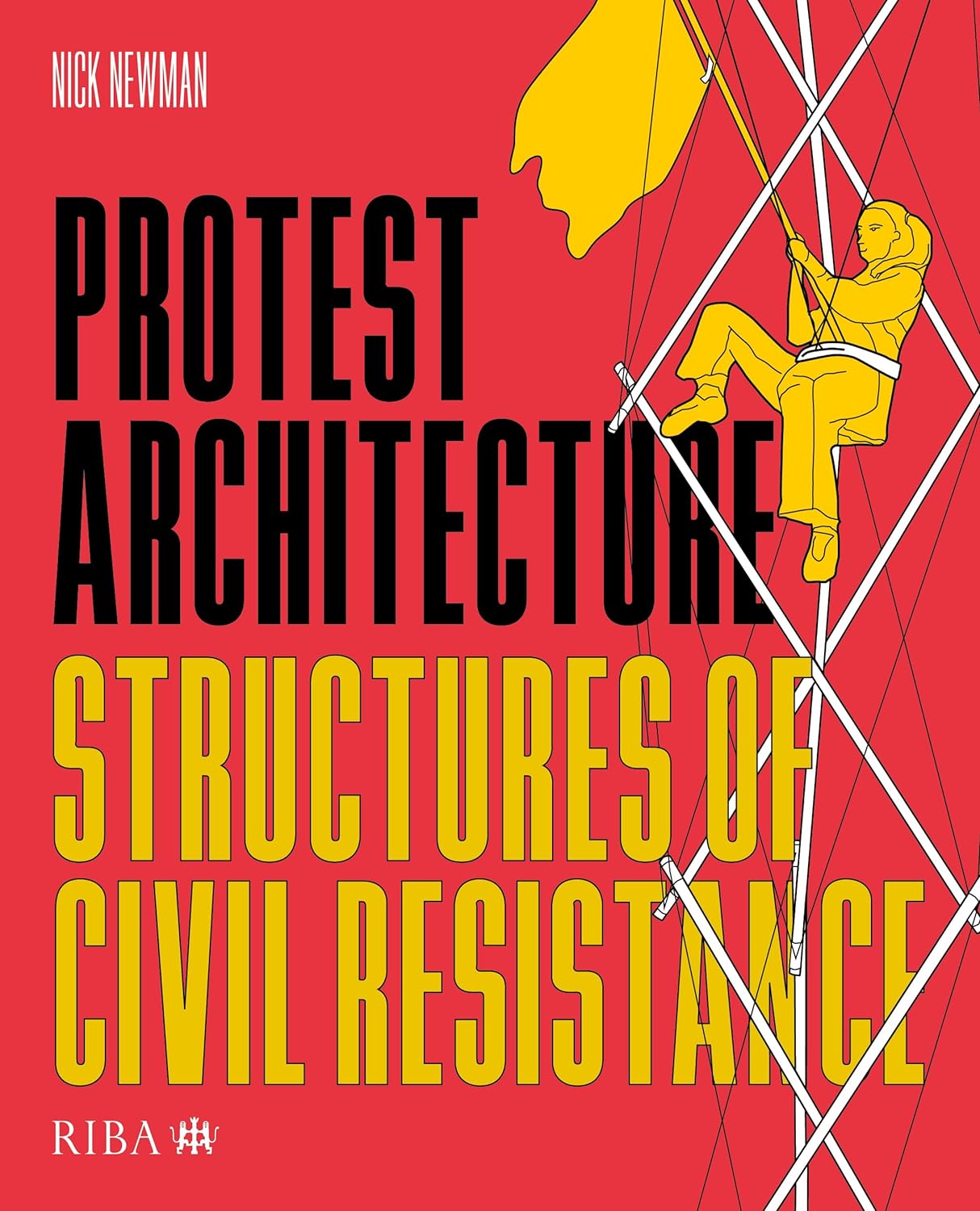

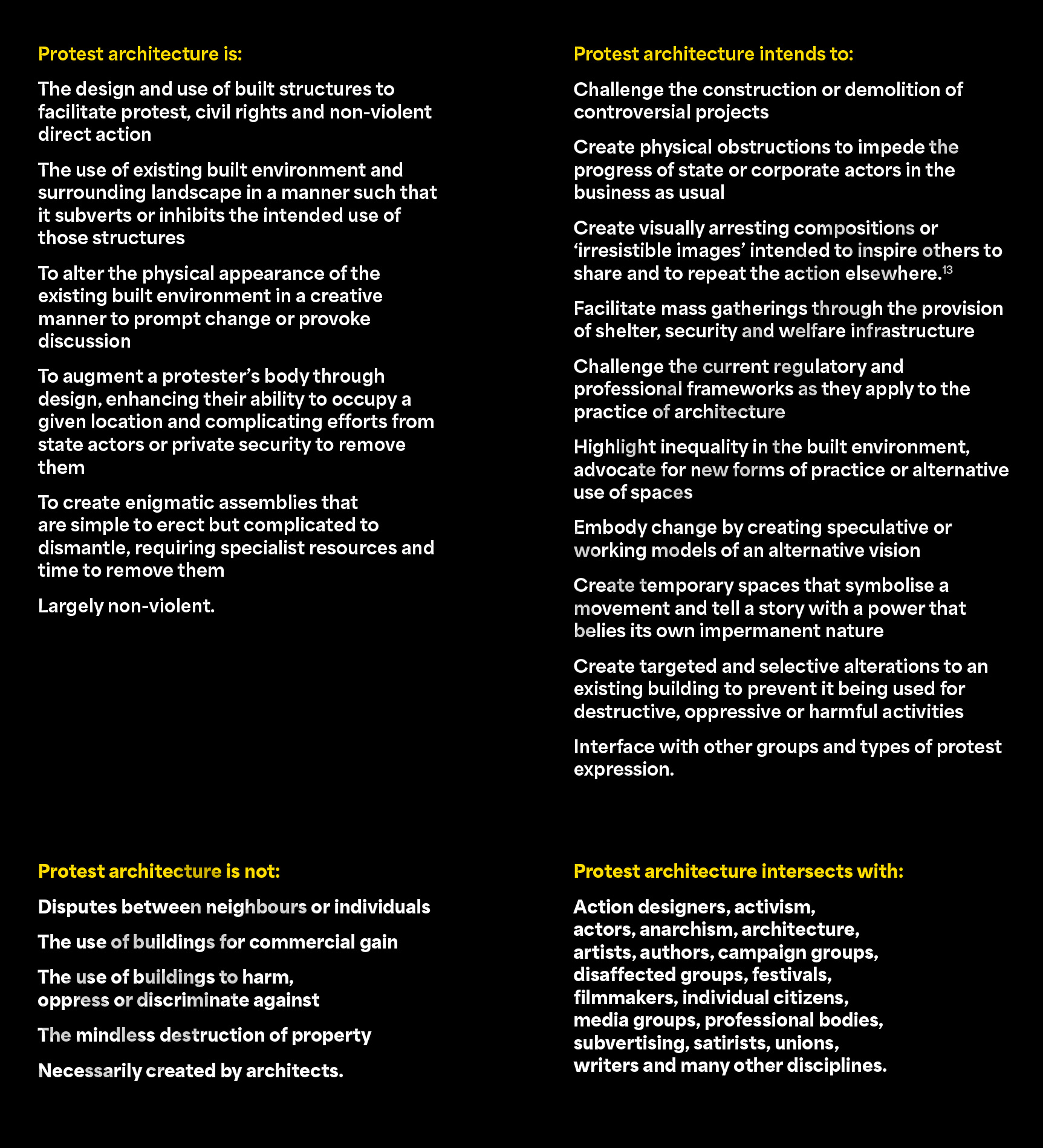
That arrest came in the 2019-20 Extinction Rebellion protests across London, in which a variety of temporal architectures were used for impact and getting noticed or blocking roads and causing disruption. Environmental protest and activism has been at the root of protest architecture for many years, including the famous tunnels and treehouses of the Newbury bypass and other oppositions to road building, and in the face of the Anthropocene with increasingly large and supported protests it has too been central to more recent events. However, while environmental activism is central to the book’s thesis – as well as Newman’s own biography, and central to the problems (and possibilities) facing traditional architecture – the variety of issues activists are opposing with the help of protest architecture cover all of society’s problems.
Early on, Newman lays out a short manifesto to define Protest Architecture as a strategy including the creation or adapting of built structures to facilitate protest or subvert normal use of place in the aim of protest, civil rights, and non-violent direct action. In a series of texts, a range of actions and events from LGBTQ rights, anti-war movements, inclusive access actions, and anti-autocratic protests are discussed in relation to how intersect with architectural ideas and intervention. There is also a history and theory section introducing critical movements in architecture and design which act as genesis for some of the structures and innovations later that have migrated from traditional architecture to protest.
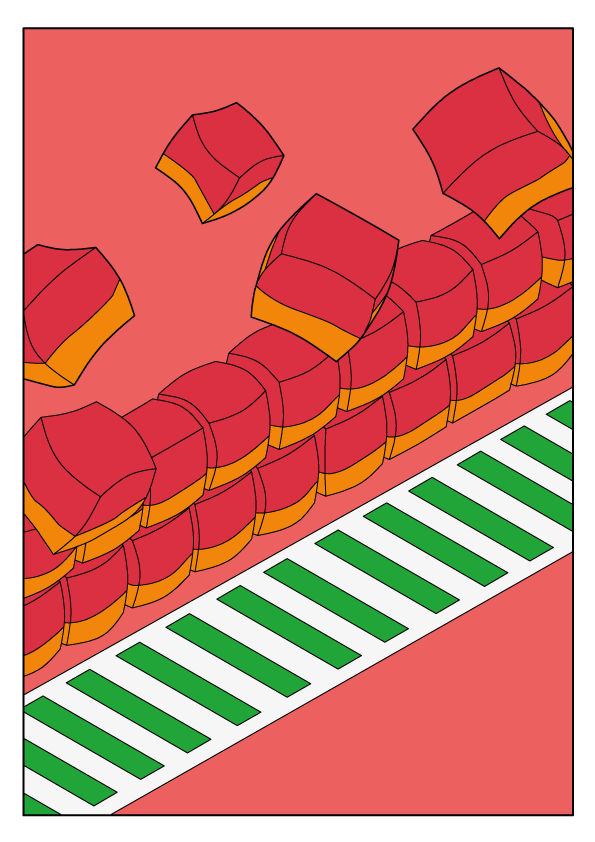
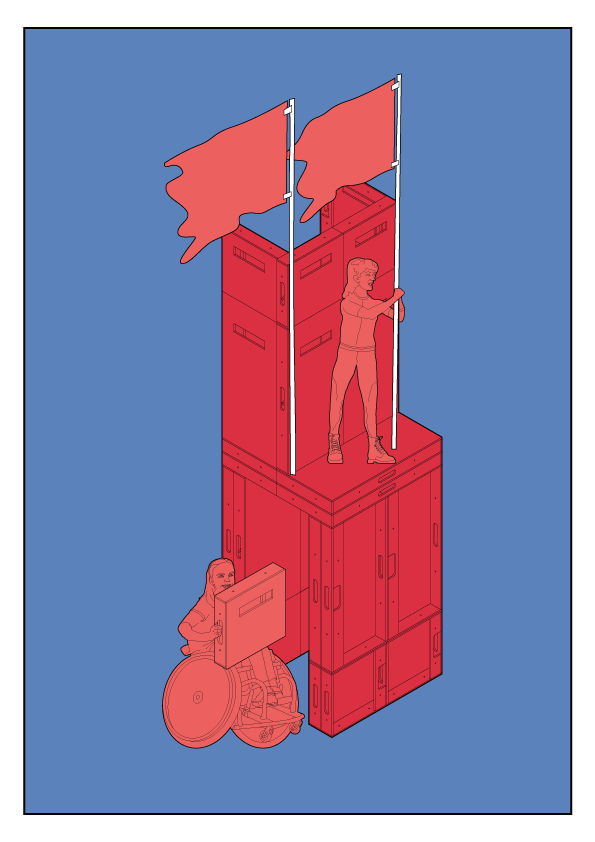
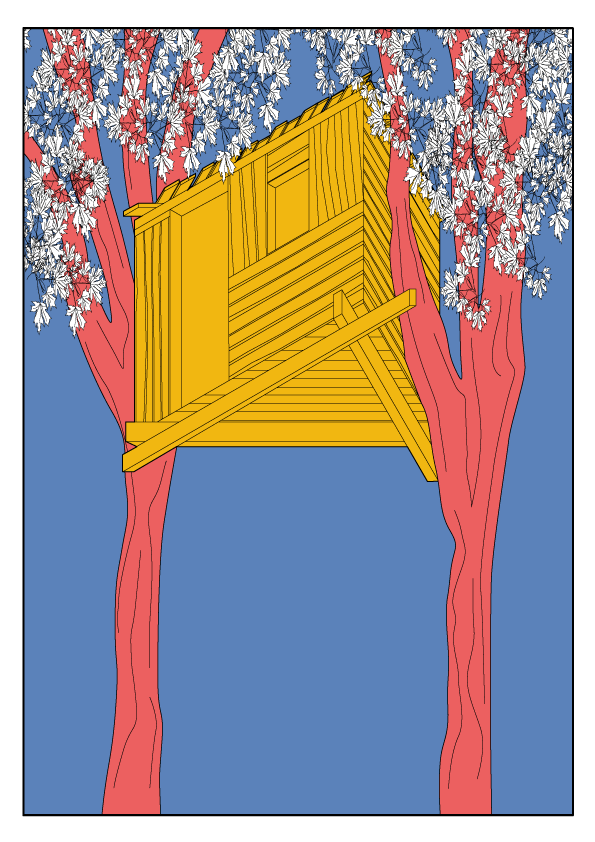
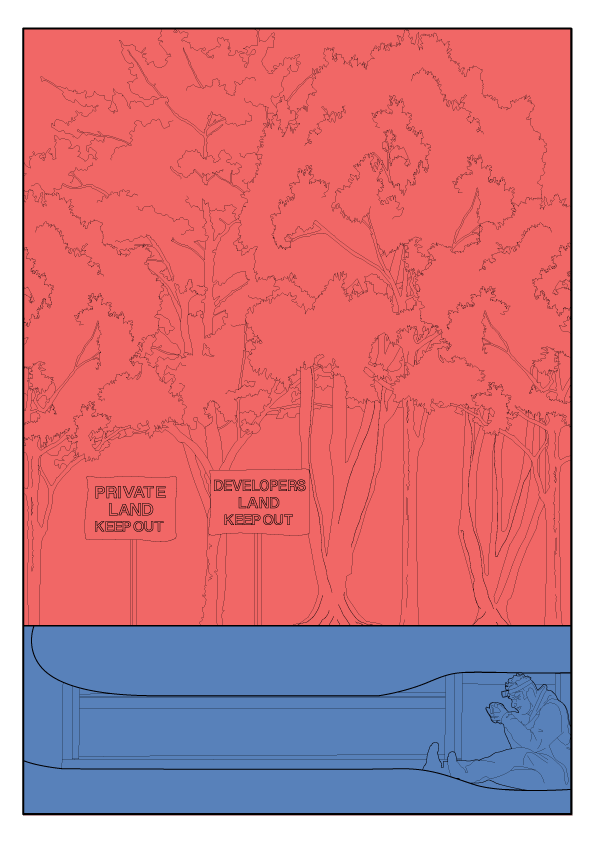
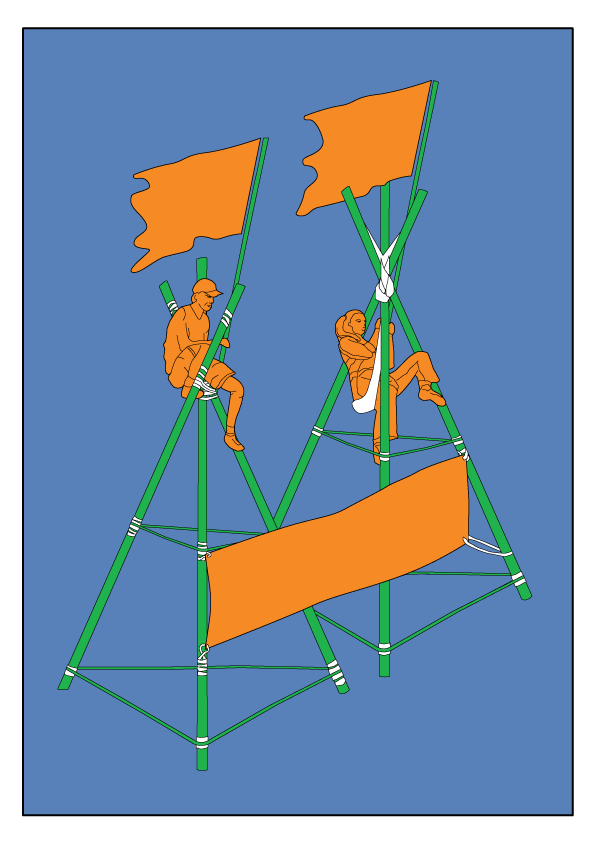
Part 2 acts as an archive of forms of protest architecture, intelligently illustrated with outline drawings by Connie Beauchamp alongside rich photographs and photojournalistic documentation. It covers strategies from the simple to the complicated. Small brick arches covering Hong Kong streets in the student rise against Chinese authorities are an uncomplicated gesture but critical in stopping traffic to leave streets open to protest. More structurally developed projects include protest beacons, towers formed by rods and cables using principles of tensegrity to create a rigid futurist structure that’s easy to assemble, climb, and lock to.
It is one of the projects from the book that is also included in a parallel exhibition, Barricade and Beacon at the Victoria & Albert Museum in London. To interject the design objects not just into the pages of an architectural book, but also the illustrious galleries of the world-famous museum, alongside historic architectural fragments, doesn’t feel like an act of provocation so much as a genuine belief from all involved that this is an important and timely area of architectural theory and idea.

The range of strategies and designs – both actual and speculative – is broad and genuinely pushes at the boundaries of architectural discourse at a time when much that is published and critically discussed still tends towards those iconic, starchitect, expensive baubles. For students, this book will stimulate and interject architectural ideas into their generation’s issues. For adults it will help connect our shared built environments to shared societal concerns. And for activists, it acts as a valuable catalogue of ideas, strategies, and structures to help build a better world.

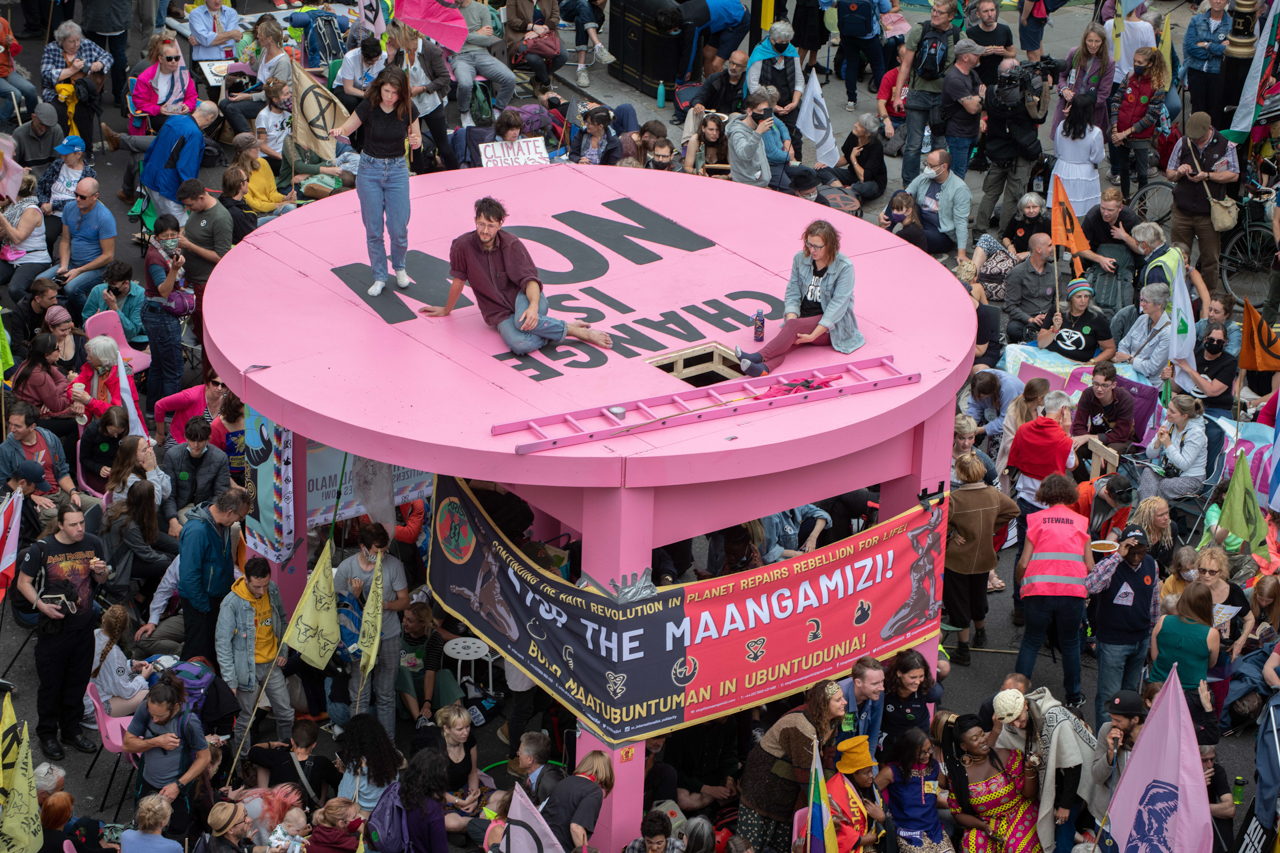

Nick Newman is a founder of Studio Bark and U-Build. His
experience spans environmental architecture, climate activism, building
performance evaluation & deep energy retrofits. He is co-author of RIBA
title Everything Needs to Change: Architecture and the Climate Emergency& author of Protest Architecture: Structures of Civil Resistance. He
speaks regularly at events on behalf of the studio & was named a Rising
Sustainability Star by Building magazine in 2014. Nick is an advocate for
radical responses to the Climate Emergency & was arrested for his
involvement in the Extinction Rebellion protests of 2019-20, which brought
central London to a standstill.
www.studiobark.co.uk
read & visit
Protest Architecture: Structures of civil resistance by Nick Newman is published by RIBA Publishing, available at book shops widely & from the publisher directly here: www.ribabooks.com/protest-architecture-structures-of-civil-resistance_9781915722171
Various pieces of protest architecture are installed at the V&A London’s presentation Barricade and Beacon, created in collaboration with Studio Bark & part of London Design Festival, open until 28 February 2025. Full details available at: www.vam.ac.uk/event/3O43NDzmlPj/barricade-and-beacon-sept-2024-feb-2025
images
Photographs from Protest Architecture reproduced with permissions.
Illustrations from Protest Architecture by Connie Beauchamp, reproduced with permission.
Installation photograph © Victoria and Albert Museum, London
publication date
26 November 2024
tags
Activism, Connie Beauchamp, Book, London Design Festival, Nick Newman, Protest architecture, Protest, RIBA, RIBA Publishing, Studio Bark, V&A Museum
Various pieces of protest architecture are installed at the V&A London’s presentation Barricade and Beacon, created in collaboration with Studio Bark & part of London Design Festival, open until 28 February 2025. Full details available at: www.vam.ac.uk/event/3O43NDzmlPj/barricade-and-beacon-sept-2024-feb-2025


